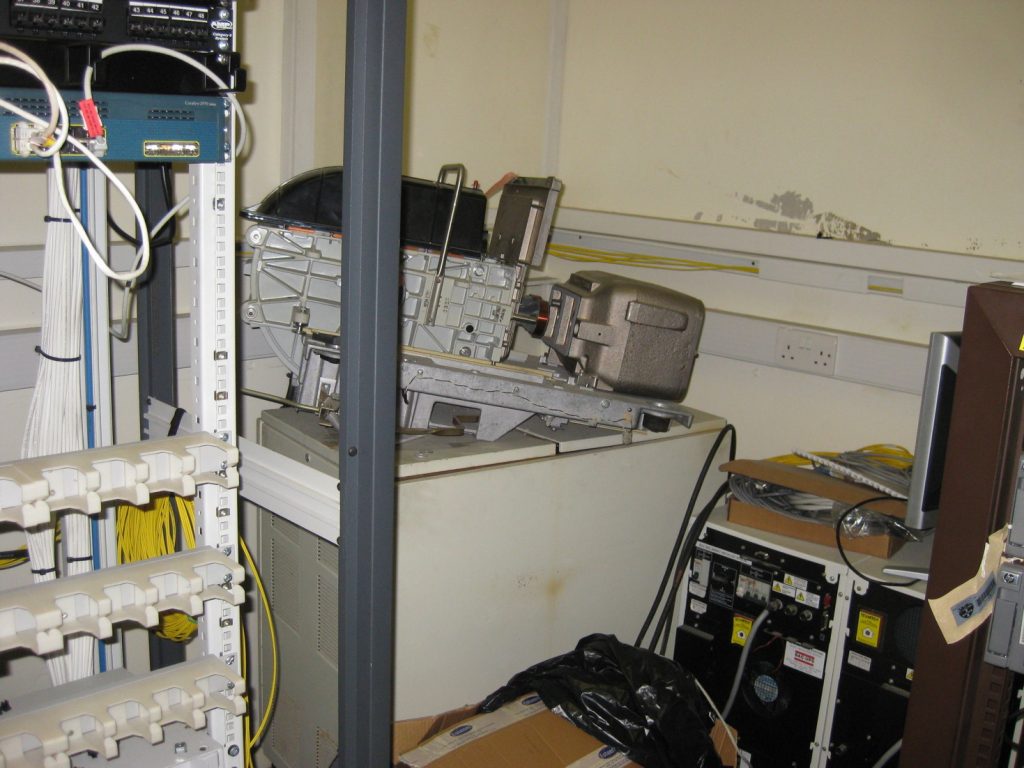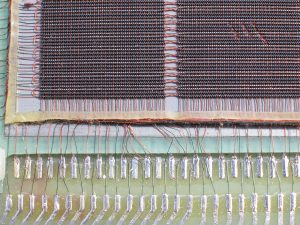- On my “Monday visit” for this week I …
Replaced a few of the captions in the Floor 3 display cabinets (what had been the Floor 6 cabinets, before CompSci moved to USB). Some of the items had been removed for display in the new CompSci Reception cabinet, in the USB: I am replacing these with appropriate items, and changing the captions if they are no longer accurate. I also took the opportunity of editing a couple of the existing captions.
Why bother with these displays, with NUIT moving in (or before) October? Because this is a public display-in-waiting, and it behoves us to take good care of it as such. - Which raises another important point: we will have to move those cabinets in the next few months, before Estates come thundering in with their bulldozers. In a masterpiece of moving, two of our favourite porters (supervised or rather watched by me) moved them down from the 6th Floor in October last year: it was an amazing feat. Next time they move, they will have to be disassembled, and the pieces very carefully wrapped in acres of protective materials: I would guess that this will be at least a whole day’s work for two people.
- Next today, I did a reconnaissance on an item belonging to the Museum which is in CT 111: this is a Memorex 3680 disk drive, which weighs about 160 pounds (70kg). It is sitting on a metal cabinet, which I discovered for the first time today is something called a Xerox Fury (disk drive): I couldn’t find this in Google today; it isn’t mentioned in the catalogue as far as I know.

So just for the record, I have a place in mind to store this in the SB; again, it will require a team of people – preferably three I think – and will take about 1/2 hour. I’m expecting to do this when I return (see below). - Finally, I made more solid progress in catalogue verification, though only had half an hour to work on this.
- Finally finally: CSH-SIG Committee members should be alert to the fact that Estates are already moving into CT (it was depressing to see stickers on doors in the Basement today). I have made very small steps to establishing liaison with Estates, and will make a bigger effort after I “return to work”. Now that we know we have Michelle on at least one of the relevant committees, this should be a lot easier.
- One thing that occurred to me today: we need to get our spare keys from Reception before they move to Black Horse House, because when they do move, all their keys will be given to Estates.
Finally finally finally: I am now away until Monday 16th July. I’ll be in Canada, and so won’t welcome any phone calls or texts; however Whatsapp works, and I’ll be reviewing email now and then.

